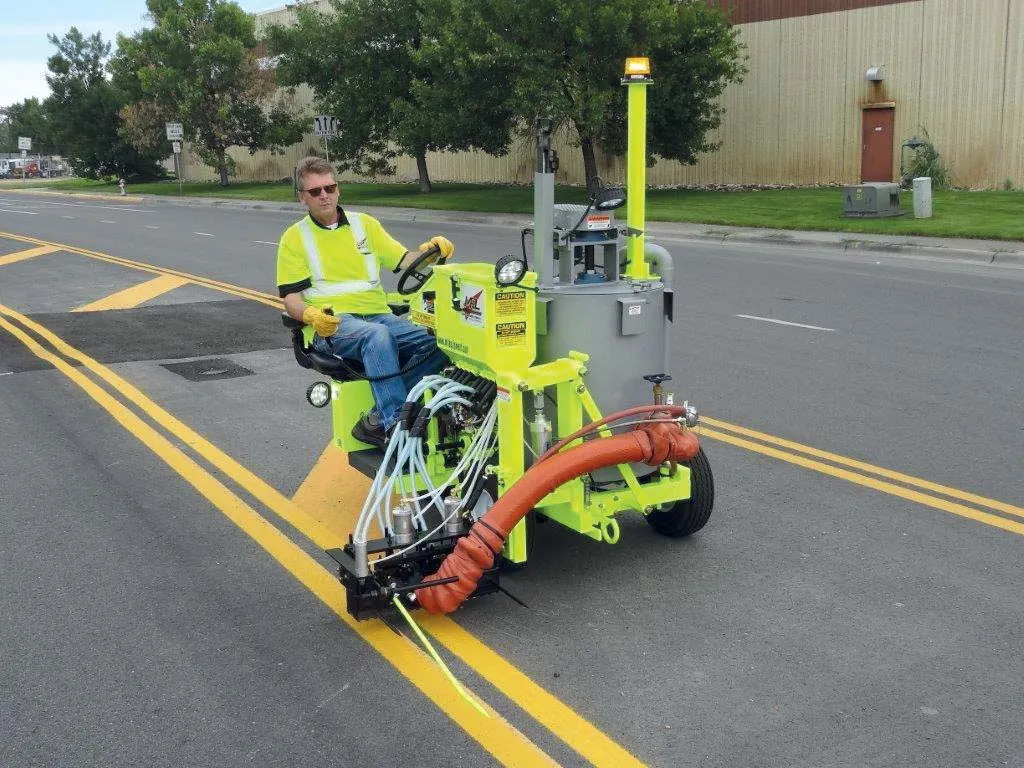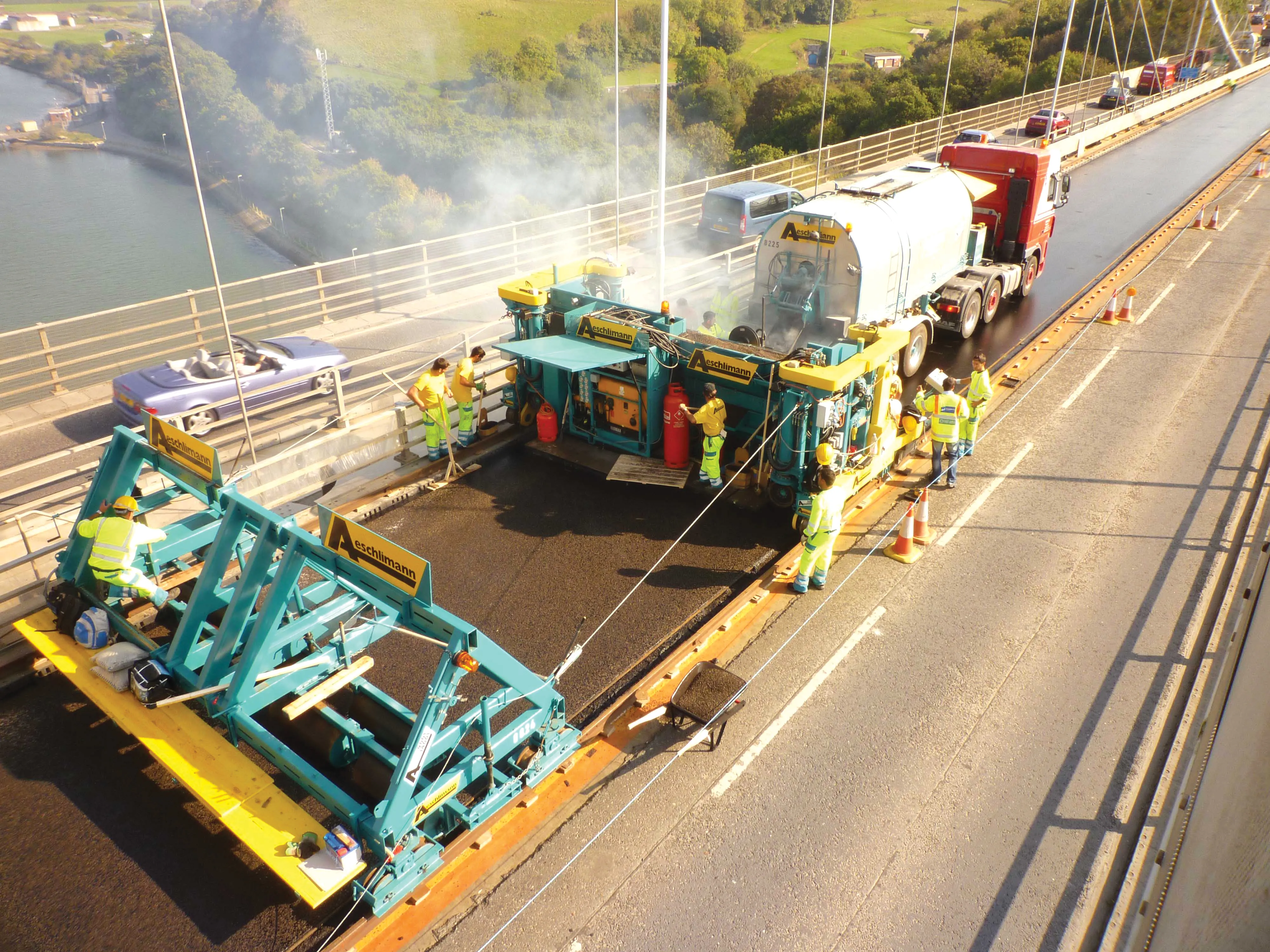
The Mini Mac is designed to increase production when applying markings for intersections, symbols or lane lines, according to MRL, based in the northern US state of Montana.
MRL supplies road marking systems as well as removal and grooving equipment. Products include truck-mounted thermoplastic, plural component, traffic paint, line-removal grinding and long-line pavement grooving machines
The Mini Mac 400 offers a 180kg material tank, electronic skipline and hydrostatic drive system. The company says the machine’s ribbon extrusion application die allows the operator to change line widths from 10-30cm with a simple quick action toggle switch.
The Mini Mac 400 is designed to be supplied with hot thermoplastic from truck- or trailer- mounted preheaters that MRL also produces in sizes ranging from 450-1,800kg.








